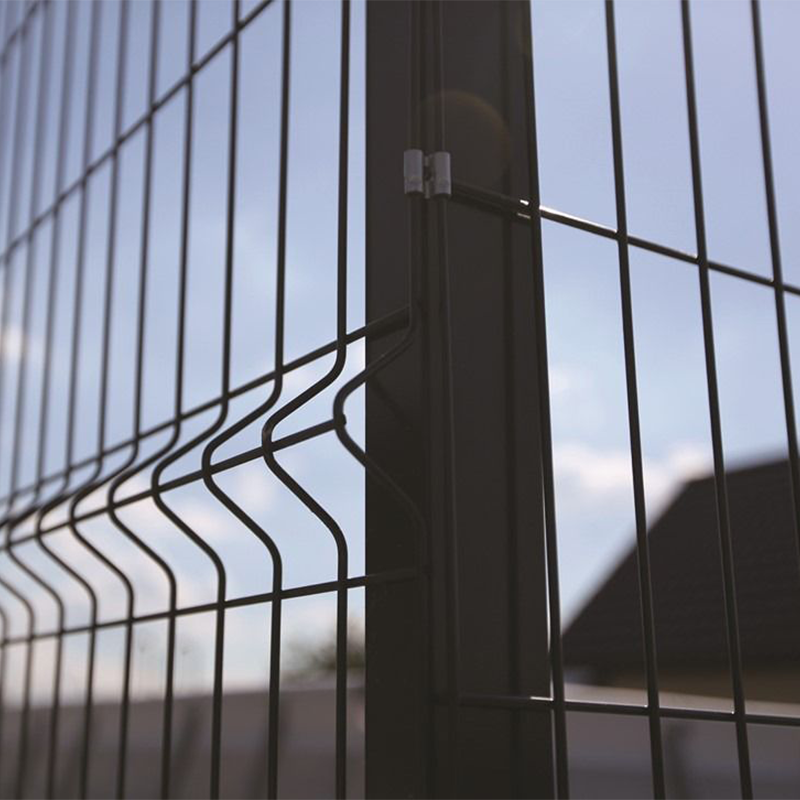Why Temporary Fencing is Essential for Construction Sites
Preventing Unauthorized Access and Theft
Temporary fencing serves as a must-have solution when it comes to keeping people out who shouldn't be there and stopping theft problems at construction sites. The simple fact is that this kind of fence acts as a real obstacle between curious onlookers and whatever might tempt them inside restricted zones. We've seen time and again how sites without good fencing tend to get hit harder by theft issues. Some industry numbers suggest places without proper barriers face around twice the risk of being robbed compared to those with decent fencing setups. For contractors and site managers, putting up temporary fences means safeguarding expensive machinery and building supplies against opportunistic thieves. While no security measure is foolproof, the cost savings from avoiding even one major theft incident often makes temporary fencing worth every penny spent on installation.
Enhancing On-Site Safety for Workers and Public
Temporary fences play an important part in making construction sites safer. They mark off dangerous zones so people who aren't supposed to be there stay away from what could hurt them. When companies follow safety rules through proper fencing, studies suggest accident rates drop around 30 percent give or take. The simple presence of these barriers reminds everyone how serious safety is on site. Workers tend to be more careful when they see those fences, which means fewer injuries overall for both those working on the job and anyone passing nearby.
Meeting OSHA and Regulatory Compliance Standards
Putting up temporary fencing plays a big role in following OSHA rules that require barriers around specific construction areas where workers might be at risk. Companies that ignore these safety requirements face more than just paper fines they could end up in court over accidents on site. Temporary fencing does double duty it keeps everyone safe while avoiding those expensive legal headaches down the road. For contractors working across multiple states, getting help from local safety consultants makes all the difference when trying to understand how regional differences affect fence placement requirements.
Types of Temporary Fences for Construction Projects
Chain Link Fencing: Durable and Versatile
Chain link fences stand out because they last forever and bend to fit almost anything, which is why so many builders grab them for job sites big or small. Contractors love how easy it is to tweak these fences to match whatever space needs covering up. Some sections might need extra height here, others require special gates there. The numbers back this up too most quality chain link setups stick around well past 15 years when someone actually takes care of them. That kind of lifespan makes these fences pretty good value for money in the long run. When planning out construction work, adding chain link fencing often turns out to be one of those smart moves that saves headaches later on.
Aluminum Fencing: Lightweight and Corrosion-Resistant
Aluminum fencing makes a great temporary solution because it's light enough to carry around easily and installs quickly at construction sites without much hassle. Most other materials just don't hold up like aluminum does against rust and corrosion, so there's less need to keep fixing things over time which saves money in the long run. The way it looks also matters quite a bit these days, plus it handles all sorts of weather pretty well. That combination of good looks and durability explains why so many contractors opt for aluminum fences when they need something reliable but not permanent for their job sites.
Metal Fencing Options for High-Security Needs
When security matters most on construction sites, metal fencing gives pretty good protection from people getting in without permission. We see these fences all over places like luxury developments and industrial warehouses where stuff gets stolen pretty regularly. Most contractors will tell their clients to add some barbed wire along with the metal fence if they really want to step up security. The actual choice depends on what kind of threats the site faces day to day. A decent metal fence setup costs money upfront but saves headaches later when equipment stays put and workers don't have to worry about someone breaking in during night shifts.
How to Install a Chain Link Fence for Construction Sites
Step-by-Step Installation Process
Putting up a chain link fence on construction sites starts off with taking good measurements of the area first. Getting these right matters a lot because it helps figure out where everything goes and makes sure there are no gaps in coverage around the perimeter, which keeps unwanted folks out. Then comes the part where we actually set those fence posts in place. We dig holes spaced just right apart from each other. If the posts aren't placed correctly, the whole thing might wobble or fall down later on. After that, the actual chain link material gets attached to the posts through different techniques depending on what tools we have handy. Some people prefer twist ties while others go for special clips. Following all these steps properly means the fence stands strong against wind and weather, doing exactly what it was meant to do for years to come.
Tools and Materials Required
To put up a chain link fence, folks need some basic tools around. Post hole diggers, measuring tape, and wire cutters come to mind first. Without these, getting the job done right becomes pretty tough going. The materials matter too. Good quality chain link fabric, proper tension bands, and sturdy posts make all the difference when it comes to how long the fence will last. Before digging into the ground, many experienced installers create a checklist of everything they need. This helps prevent those frustrating moments where someone realizes halfway through that a key item is missing. Getting the right stuff ready from the start usually means fewer headaches later on down the road with temporary fences.
Tips for Securing Uneven Terrain
Putting up a chain link fence across uneven ground definitely throws some curveballs, but there are ways around it. Longer fence posts work wonders keeping the whole thing at the right height even when the earth isn't flat. When dealing with slopes, messing around with the tightness of those chain links actually makes a big difference in how stable everything stays. And let's face it, sometimes calling in pros who've dealt with this before saves headaches down the road. They know all sorts of tricks for different kinds of tricky spots. At the end of the day, these little adjustments matter a lot if we want our fences standing strong despite whatever weird land they're sitting on.
Key Benefits of Using Temporary Fencing Solutions
Cost-Effective Site Security
Temporary fencing often saves money when compared against permanent alternatives, which makes it a smart option for construction sites working within tight budgets. Research indicates construction sites that go with temporary security options tend to lose less equipment to theft, sometimes cutting losses by around 30% according to industry reports. These fences protect valuable materials and tools from disappearing, which helps keep profits intact while keeping the project moving forward without creating unexpected holes in the budget. Many contractors find themselves coming back to temporary fencing solutions again and again simply because they work so well financially.
Quick Deployment and Reusability
Temp fences get set up fast and taken down just as quickly, saving loads of time on construction sites when deadlines matter most. Since they can be used again and again across different jobs, these fences represent good value for money in the long run. Contractors love how easy it is to move them around as work progresses from one area to another. A fence that was protecting foundation work yesterday might guard equipment storage today, all while keeping the site secure throughout various stages of development.
Customizable Layouts for Evolving Projects
Temporary fencing solutions can really bend with what a construction site needs as things change day by day. When crews start moving equipment around or expanding operations, these fences aren't fixed in place forever. They can actually get rearranged pretty easily so workers still have access where they need it without disrupting ongoing tasks. Most companies offer all sorts of extras too - think about adding gates at strategic points, maybe even some special barriers for hazardous areas. These additions make life on site much smoother for everyone involved. The whole setup grows right along with the project itself instead of becoming obsolete after a few weeks.
Navigating Permit Requirements for Temporary Fences
Understanding Local Zoning Laws
Getting familiar with local zoning rules matters a lot if someone wants to put up temporary fencing without running into trouble later on. Zoning requirements vary quite a bit depending on where exactly the project is located. Failing to follow them might lead to fines or even getting ordered to take down whatever was already installed. Most folks forget about checking what their city or county allows before starting work. A quick visit to the local government website usually gives all the details needed about permitted heights, placement restrictions, and other specifics. Taking time to research ahead saves headaches down the road when dealing with unexpected bureaucratic hurdles during construction projects involving temporary fences.
Critical Area Compliance Considerations
Putting up temporary fences in sensitive spots such as wetlands or around historic landmarks means knowing what extra rules might apply. Without this understanding, there's a real risk of messing up delicate ecosystems or violating land use regulations. Before starting any project, site managers should dig into local ordinances and talk to folks who know the environment inside out. Environmental consultants often spot issues that aren't obvious at first glance. Their expertise helps avoid costly mistakes down the road while keeping everything within legal boundaries. Smart planning saves time and money in the long run when dealing with these tricky installations.
Duration Limits and Renewal Processes
Most temporary fencing permits have time restrictions built into them. Getting familiar with these time frames helps match them up properly with construction schedules. Contractors would do well to learn about permit renewals ahead of time since unexpected lapses can cause serious headaches down the road, not to mention possible fines from regulatory bodies. Keeping thorough records of every application submitted and each renewal processed allows projects to stay on the right side of regulations without surprises. This documentation practice keeps things moving forward smoothly during construction phases when delays are especially costly.



